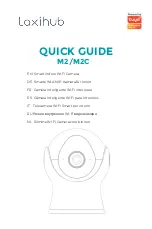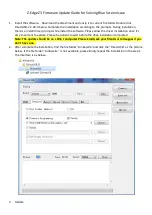
V1.02
Thom Hogan’s Complete Guide to the Nikon D300
Page 147
of artifacts and the size of the resulting file. That’s because
hard edges contain conflicting data the compression scheme
needs to resolve, and more bits are needed to hold that
information. Thus, setting high levels of sharpening with JPEG
files at high ISO values using the lower JPEG quality settings
should be avoided, when possible, with the D300.
Don’t believe me about the blurring idea? Here’s the same
sample with a slight Gaussian Blur applied before noise
reduction and sharpening:
Edge integrity on that sample is a little better than the previous
ones, though we’ve lost a bit of sharpness overall. This, of
course, is one of the things we fight with digital: we’re looking
for the combination of settings that minimizes visual artifacts
while preserving detail. My point is that the more JPEG
compression you use, the more you’ll fight that problem.
The D300 is a bit like the D100 and D200, though: something
in the JPEG rendering scheme used tends to make
JPEG fine
and
JPEG normal
images relatively immune to over
sharpening and edge artifact issues, at least at most typically-
used ISO values and when you’ve picked
Optimal quality
for
JPEG compression
. Indeed, if you run a resolution test on
both JPEG and NEF images from a D300, you’ll find that the
NEF image resolves slightly more detail, an indication that
JPEG encoding is “smoothing” edges a bit.
(Just in case it’s not clear from the preceding: it’s okay to use
higher levels of sharpening on D300 images at the lower ISO
values and higher JPEG quality levels. It’s not okay to use
















































